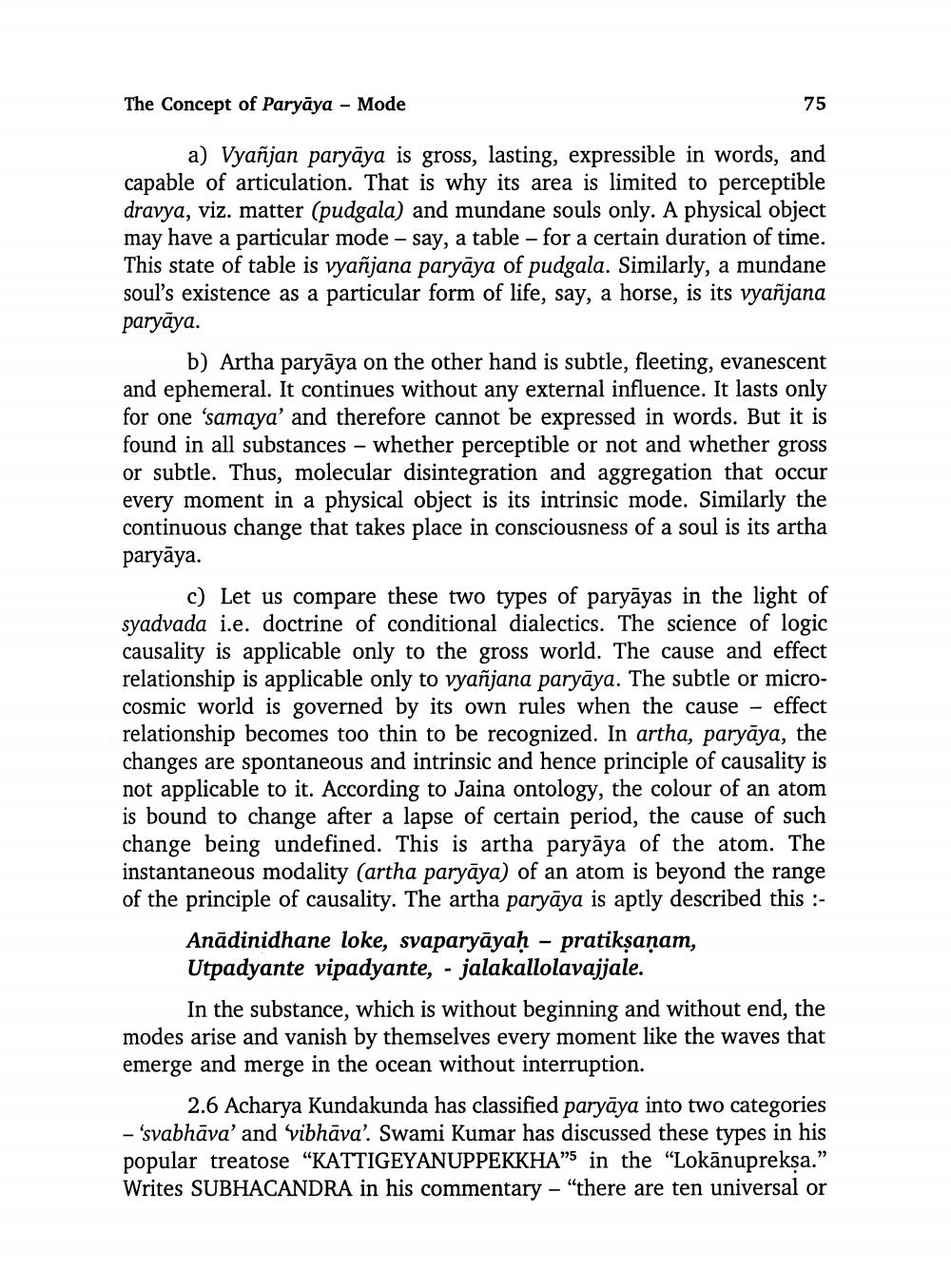________________ The Concept of Paryaya - Mode 75 a) Vyanjan paryaya is gross, lasting, expressible in words, and capable of articulation. That is why its area is limited to perceptible dravya, viz. matter (pudgala) and mundane souls only. A physical object may have a particular mode - say, a table - for a certain duration of time. This state of table is vyanjana paryaya of pudgala. Similarly, a mundane soul's existence as a particular form of life, say, a horse, is its vyanjana paryaya. b) Artha paryaya on the other hand is subtle, fleeting, evanescent and ephemeral. It continues without any external influence. It lasts only for one 'samaya' and therefore cannot be expressed in words. But it is found in all substances - whether perceptible or not and whether gross or subtle. Thus, molecular disintegration and aggregation that occur every moment in a physical object is its intrinsic mode. Similarly the continuous change that takes place in consciousness of a soul is its artha paryaya. c) Let us compare these two types of paryayas in the light of syadvada i.e. doctrine of conditional dialectics. The science of logic causality is applicable only to the gross world. The cause and effect relationship is applicable only to vyanjana paryaya. The subtle or microcosmic world is governed by its own rules when the cause - effect relationship becomes too thin to be recognized. In artha, paryaya, the changes are spontaneous and intrinsic and hence principle of causality is not applicable to it. According to Jaina ontology, the colour of an atom is bound to change after a lapse of certain period, the cause of such change being undefined. This is artha paryaya of the atom. The instantaneous modality (artha paryaya) of an atom is beyond the range of the principle of causality. The artha paryaya is aptly described this : Anadinidhane loke, svaparyayah - pratiksanam, Utpadyante vipadyante, - jalakallolavajjale. In the substance, which is without beginning and without end, the modes arise and vanish by themselves every moment like the waves that emerge and merge in the ocean without interruption. 2.6 Acharya Kundakunda has classified paryaya into two categories - 'svabhava' and vibhava'. Swami Kumar has discussed these types in his popular treatose "KATTIGEYANUPPEKKHA" in the "Lokanupreksa." Writes SUBHACANDRA in his commentary - "there are ten universal or




